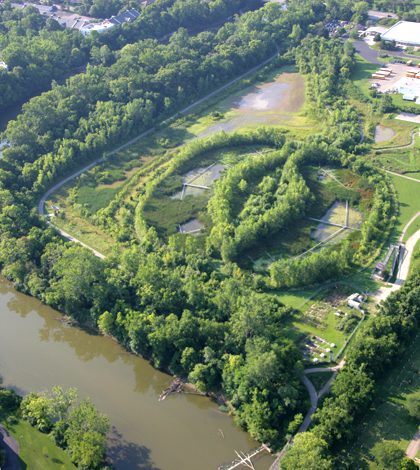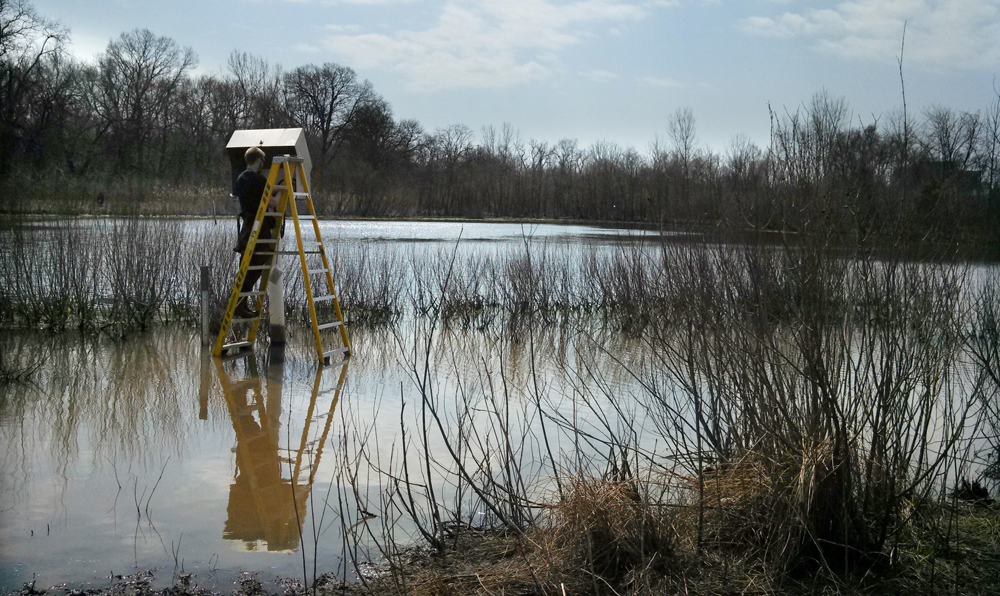Ohio State University’s experimental wetland research park seeks scientists

Ohio State University’s experimental wetland park sits nestled in a bend in the Olentangy River, where things are changing in Ohio’s capital city.
The Wilma H. Schiermeier Olentangy River Wetland Research Park is in a rebuilding phase after the retirement of the original director, Bill Mitsch. He coordinated the construction of the wetlands, starting in 1992.
Lynn McCready, interim director for the wetlands, is working to get more research underway at the facility. “Our primary focus of study will still be on the wetland ecology, but we do want to widen that focus to other aquatic ecosystems,” she said.
The experimental wetland has opened its doors to scientists interested in doing research there. “We have a scientific advisory board that reviews all research requests in coordination with the facility staff. Our goal is to have the first round of facility renovations completed for incoming researchers by the fall,” McCready said.
Wetland outreach programming is also a high priority.“We are in the process of creating hands-on educational modules for middle and high school students that really teach them the importance of wetlands as a whole,” she said.
The Olentangy River, which wraps around the park’s northern and eastern sides, is also in a restoration phase. South of the wetlands, at Columbus’ 5th Avenue, a dam is being removed to improve water quality. Once the river restoration is complete even more wetland area will be installed, though it won’t be part of the research park.
The Olentangy acts as an artery for the research park. A pump station on the grounds of the wetlands draws water from the river into two experimental wetlands. It flows into large, shallow wetland pools, with thick sediment settled beneath. It exits on the other end through weir boxes. Kay Stefanik, a recent OSU doctoral graduate and researcher who manages the pump station, said she pumps water to match flows that would come from the river naturally based on its water level.
The parks’ water is monitored by two Nexsens iSIC data loggers that sit near the outflows of the two wetlands, mounted on the ends of the narrow boardwalks that span the pools. They record and transmit pH, temperature, dissolved oxygen and turbidity data collected by YSI sondes. Nexsens AccuStage water level sensors help researchers monitor water intake.

NexSens Engineer Mike Voellmecke services monitoring equipment at the Wilma H. Schiermeier Olentangy River Wetland Research Park (Credit: Austen Verrilli)
There are also monitoring stations at the park’s water intake, forested bottomland, billabong and outflow.
McCready said data collected shows that the wetlands are very active filters for the river during the spring growing season. The water exiting the wetlands has higher dissolved oxygen levels, lower nutrient content and lower turbidity levels. “The water flows down and around of the plants,” she said. “It gives (the water) time for sediment to settle out.”
Standing on the park’s narrow boardwalks, someone with an untrained eye can’t spot any differences between the two wetlands. However, the pair got to their current states through two different processes. Mitsch, the park’s former director, planted vegetation in one and left the other to Mother Nature. The unplanted wetland was populated by indigenous vegetation through natural processes. Mitsch found in his study that wetland vegetation establish itself regardless of how it was planted.
Both now have thriving vegetation and wildlife. Geese paddle around beneath the boardwalks, muskrats scurry along the banks and red-winged blackbirds chirp while clinging to bowing reeds and cattails.
So, what’s it like to manage an experimental wetland facility? “On a day-to-day basis there are always challenges,” McCready said. “There’s always something that needs to be tweaked.”
If you are interested in doing research or helping researchers at the facility contact Lynn McCready.
Top image: Wilma H. Schiermeier Olentangy River Wetland Research Park (Credit: Ohio State University)




0 comments